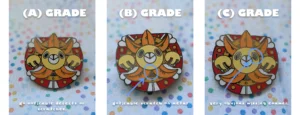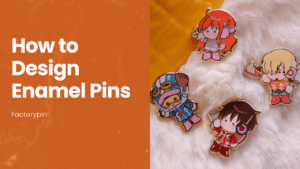Ever found yourself stuck in a trade, unsure if you’re getting a fair deal? Maybe you’ve walked away from a pin swap only to realize later that you gave up something rare for a common design. Or perhaps you’re just starting out and have no idea how to tell which pins are worth holding onto. Pin trading is exciting, but without the right knowledge, it’s easy to feel lost. Don’t worry—this guide will walk you through everything from understanding a pin’s value to insider trading strategies that will make you a pro in no time.


A Brief History of Trading Pins
The tradition of trading pins dates back to the early 20th century, gaining popularity in events like the Olympic Games. Originally used as identification markers for athletes and officials, these pins quickly evolved into collectibles that fans and participants eagerly exchanged.
Evolution of Trading Pins
| Era | Key Development |
|---|---|
| Early 1900s | Pins were first used in the Olympic Games for identification. |
| 1920s-1950s | Baseball teams began using pins for promotions and fan engagement. |
| 1980s-1990s | Pin trading gained mainstream popularity in youth sports like Little League. |
| 2000s-Present | Custom pins with advanced designs (spinners, glitter, LED) became common. |
Understanding the Value of a Trading Pin
Not all trading pins are created equal. Some are highly sought after, while others may be easier to acquire. Understanding what makes a pin valuable can help you make smarter trades.
Factors That Affect Pin Value
| Factor | Description |
|---|---|
| Rarity | Limited-edition pins or special event releases tend to be more valuable. |
| Design Complexity | Pins with features like glitter, spinners, or danglers are often in high demand. |
| Team & Event | Pins associated with major tournaments or championship teams usually have higher value. |
| Condition | Well-preserved, undamaged pins are more desirable to collectors. |

Pro Tips for Successful Pin Trading
To maximize your pin trading experience, follow these expert strategies:
1. Build a Diverse Collection
Having a variety of pin styles, sizes, and teams increases your chances of making successful trades.
2. Learn to Negotiate
Fair trading is key, but knowing when to hold onto a pin and when to trade can give you an advantage. If a pin is highly sought after, you can trade it for multiple lower-value pins or hold onto it for a bigger trade later.
3. Observe Trading Trends
Certain pins gain popularity due to special events or player performances. Stay updated on what’s trending to know when to trade.
4. Respect Pin Trading Etiquette
Following proper trading etiquette ensures a smooth experience:
- Ask before touching someone’s pins
- Offer fair trades
- Be patient and wait your turn
- Respect non-trade pins (often worn backward on lanyards)

Best Places to Trade and Buy Pins
If you’re looking for the best places to find trading pins, consider these options:
| Location | Why It’s Great for Pin Trading |
|---|---|
| Tournaments & Events | The best place to trade pins in person, especially at Little League and Cooperstown tournaments. |
| Online Marketplaces | Websites like eBay and collector forums provide access to rare and older pins. |
| Team & Club Exchanges | Many teams set up private trading sessions before major events. |
| Theme Parks | Locations like Disney parks have vibrant pin trading communities. |
FAQ
Q: How do I know if my pin is rare?
A: Check for limited-edition markings, production numbers, and event exclusivity. Pins made in small quantities are typically more valuable.
Q: Can I trade used pins?
A: Yes, but ensure they are in good condition. Scratched or damaged pins may have lower value.
Q: What’s the best way to store my pin collection?
A: Use pin books, shadow boxes, or display cases to keep them organized and prevent damage.
Conclusion
Trading pins are more than just a hobby—they’re a way to connect with others, celebrate achievements, and build lasting memories. By understanding pin values, practicing smart trading strategies, and following proper etiquette, you can enhance your pin trading experience. Whether you’re just starting or are a seasoned collector, the thrill of the trade never gets old!
For those interested in creating their own custom trading pins, many manufacturers offer customizable options to fit your team’s needs. Search online for “custom trading pins” to explore your choices!





